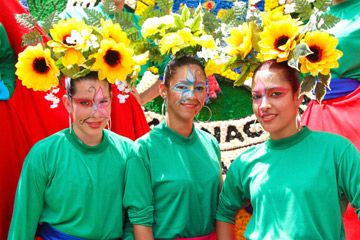In some ways, Cuba wears the guise of a land lost in time. The massively finned 1950s automobiles lumbering down its boulevards and the lingering Spanish colonial influences in its historic architecture exist beside the eclectic and sometimes stern symbols of 20th-century socialism. Together, they create a puzzling landscape that can make Cuba seem mystifying, often quaint and sometimes alarming to the outside observer.
Cuba is a country of contrasts. Centuries of Spanish colonialism are evident in the architecture, cuisine and some of the customs of modern Cuba, but over 30 years of socialism -- under the auspices of the Partido Comunista de Cuba, the Communist Party in Cuba -- have had a huge impact on the people and culture. Cuban traditions are made up of layers that reflect Spanish conventions, the residual influences and resentments of America's relatively brief occupation and later embargo and decades of socialist austerity.
Advertisement
Cuba's art, music and food have also been influenced by a diverse population that now exceeds 11 million residents. African, French, Portuguese, Haitian, Jamaican and Chinese immigrants helped to shape a musical and culinary heritage that's distinctly Cuban. At first glance, the ingredients in Cuban cuisine may lack drama, but ultimately, they work together in perfectly spiced dishes that bring out new flavor notes in common ingredients. Cuba's music is special, too. It's arguably one of the most prized exports of this island nation. Cuban music exhibits an insistent beat, complexity and intensity that make it immediately recognizable around the world. Like its people, it's diverse, vibrant and adaptable.
On the next pages, we'll take a look at Cuban customs and traditions. You can learn a lot about the heart of a nation from its food, dress, customs and celebrations.


